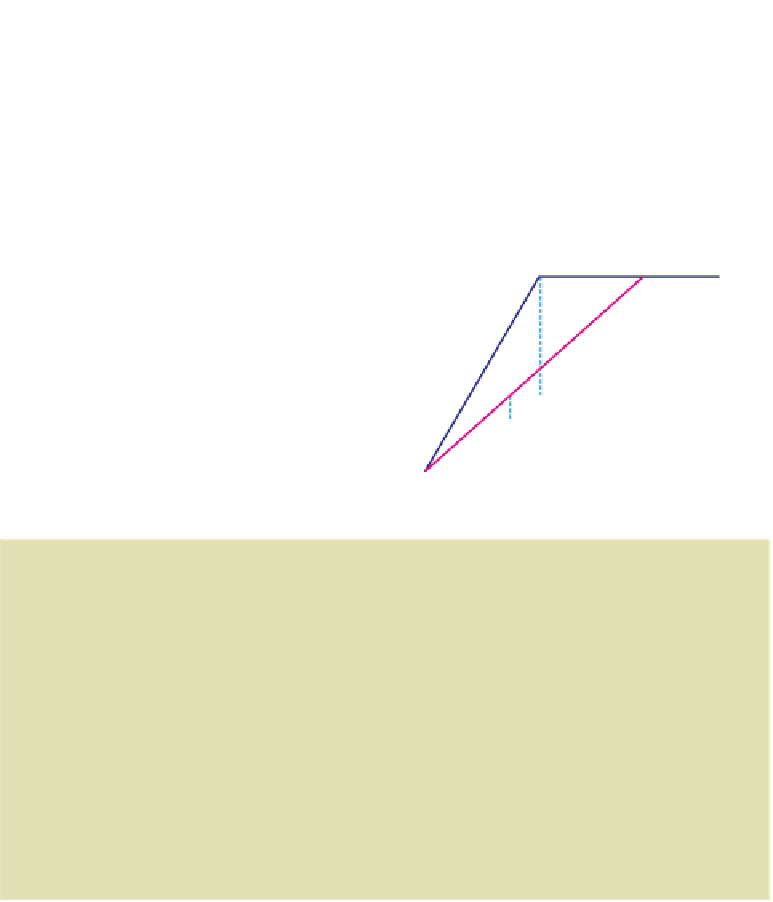Biology Reference
In-Depth Information
(a)
(b)
Cost
Rich
}
Benefit
B
Cost
Poor
Benefit
Poor
Rich
A
X
X'
A
X'
X
Territory area
Territory area
Fig. 5.7
(a) The idea of economic defendability. As the amount of resource defended
(or territory size) increases, so do the costs of defence. The benefits (e.g. amount of food
available) are assumed to increase at first but level off as the resource becomes
superabundant in relation to the animal's capacity to process the resource. Two benefit
curves are shown, one for a rich environment and one for a poor environment: the benefit
curve rises more steeply in the former because the density of resources is higher. The
resource is economically defendable between A and B. Within this range the optimal
territory size depends on the currency: for maximizing net gain (B-C) the optimal size is
smaller for the rich environment (X) than for the poor one (X
′
) (note that this is where the
slopes of the cost and benefit curves are equal). (b) The same model, but with slightly
different shaped curves. In this case the optimal territory size to maximize net gain is
predicted to
increase
in a rich environment (X now greater than X
′
). Therefore, the
shapes of the cost and benefit curves are crucial for the predictions that are made!
After Schoener (1983).
The idea of economic defendability has also been used to predict the levels of resource
availability which could lead to territorial defence (Fig. 5.7). If resources are at low
density, the gains from excluding others may not be sufficient to pay for the cost of
territorial defence. Instead, the animal might abandon its territory and move elsewhere.
There may also be an upper threshold of resource availability beyond which defence is
not economical. This upper boundary could arise because there may be so many
intruders trying to invade rich areas that defence costs would be prohibitively high.
Alternatively, there may be no advantage of territoriality at high resource levels if the
owner cannot make use of the additional resources made available by defence.
In Gill and Wolf 's sunbirds, one advantage of territorial defence was that it raised the
amount of nectar per flower (by exclusion of nectar thieves) and, hence, saved foraging
time (Box 5.1). But if nectar levels are already high, the extra increment resulting from
territorial defence saves hardly any foraging time. This is because the bird's rate of food
intake at high nectar levels is limited by the time it takes to probe its beak into the flower
(the handling time). For example, Gill and Wolf calculate that an increase from 4 to 6
Time and energy
budgets of
sunbirds predict
when resources
should be
defended
Resource defence
does not pay
when nectar is
too scarce or too
abundant
μ
l






































